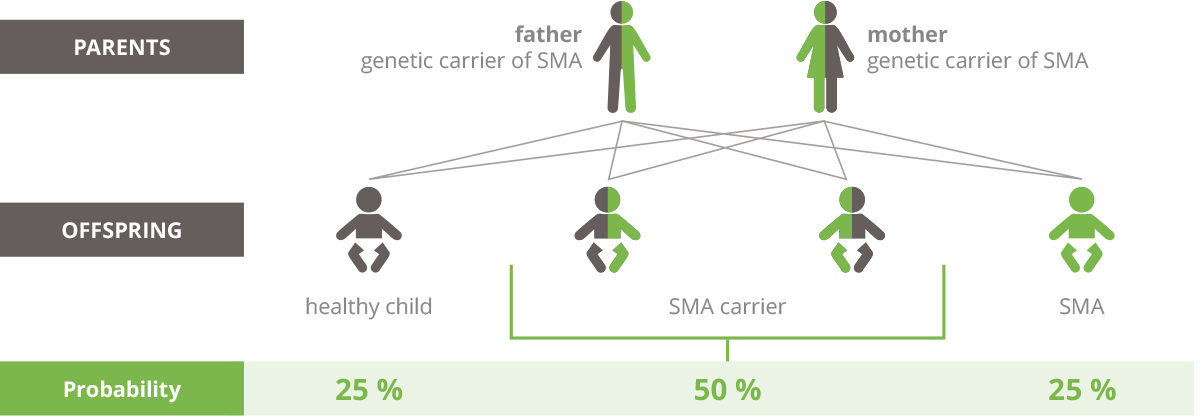Spinal muscular atrophy (SMA) is a degenerative neuromuscular disease with an incidence of 1:10.000 (Orphanet). This rare condition is the most common inherited lethal disorder of infants (Arnold D et al). The autosomal recessive mutation usually affects the survival motor neuron (SMN) 1 gene on chromosome 5q13 (Melkie J et al). In only 5% of affected persons rare mutations are responsible and in further 2% a de novo mutation are present. Furthermore, there are also non-5q SMA cases (Lefebvre S et al).
Figure 1: Autosomal recessive inheritance of SMA

